Abstract
Forty-one stock organisms and 581 fresh clinical isolates were used in comparing the Minitek system to conventional tubed media to determine if this system is feasible and accurate for a high-volume clinical microbiology laboratory. In addition to comparison with tubed media, the following parameters were tested: (i) reproducibility of disks, (ii) the effect of variation in inoculum size, (iii) the effect of the age of culture, and (iv) the effect of predispensing disks. A total of 5,947 disks were compared with tube reactions; 95.9% agreed on the initial reading. After repeating questionable tube and disk reactions, this agreement rose to 98.2%. Using the disk reactions and the identification schema currently in use with tubed media, 94.9% of the Minitek final identifications agreed with those of tubed media; 1.5% gave differing identifications and 3.6% were inconclusive. This system is accurate, inexpensive, flexible, and convenient.
Full text
PDF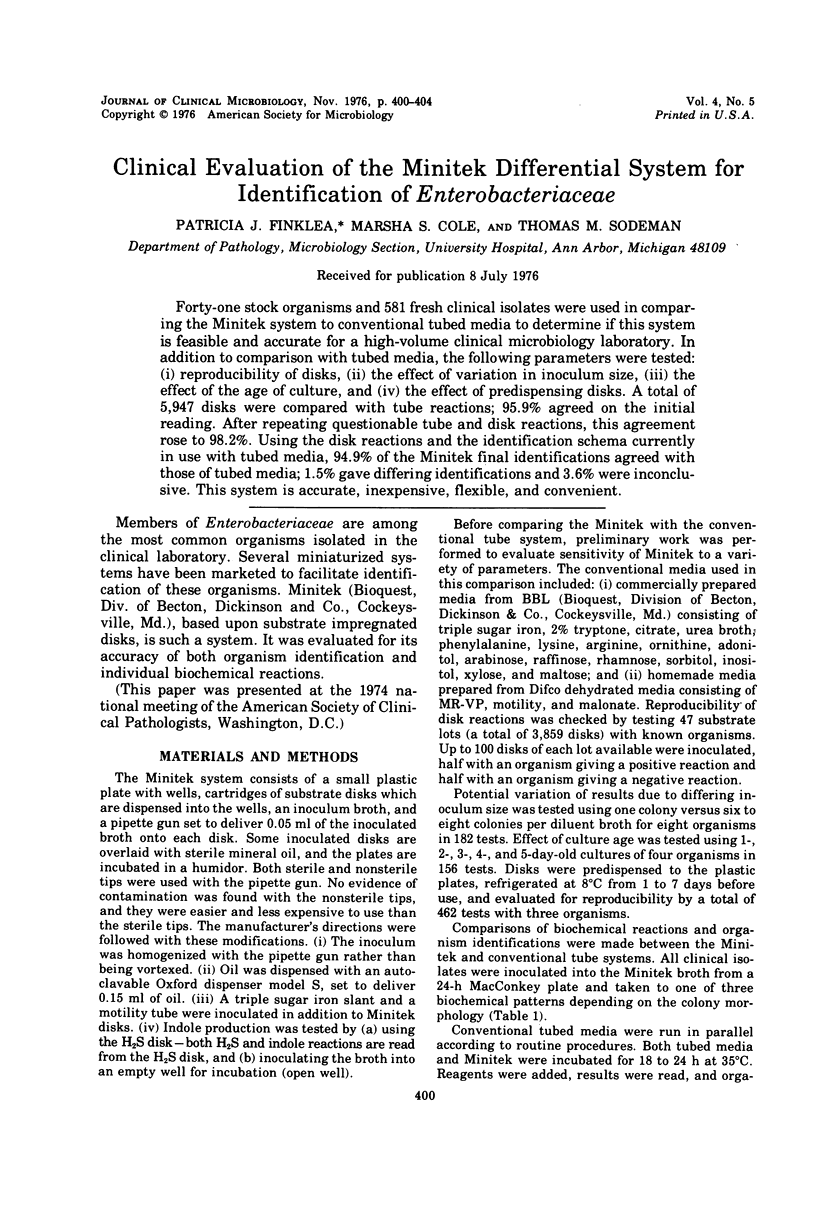
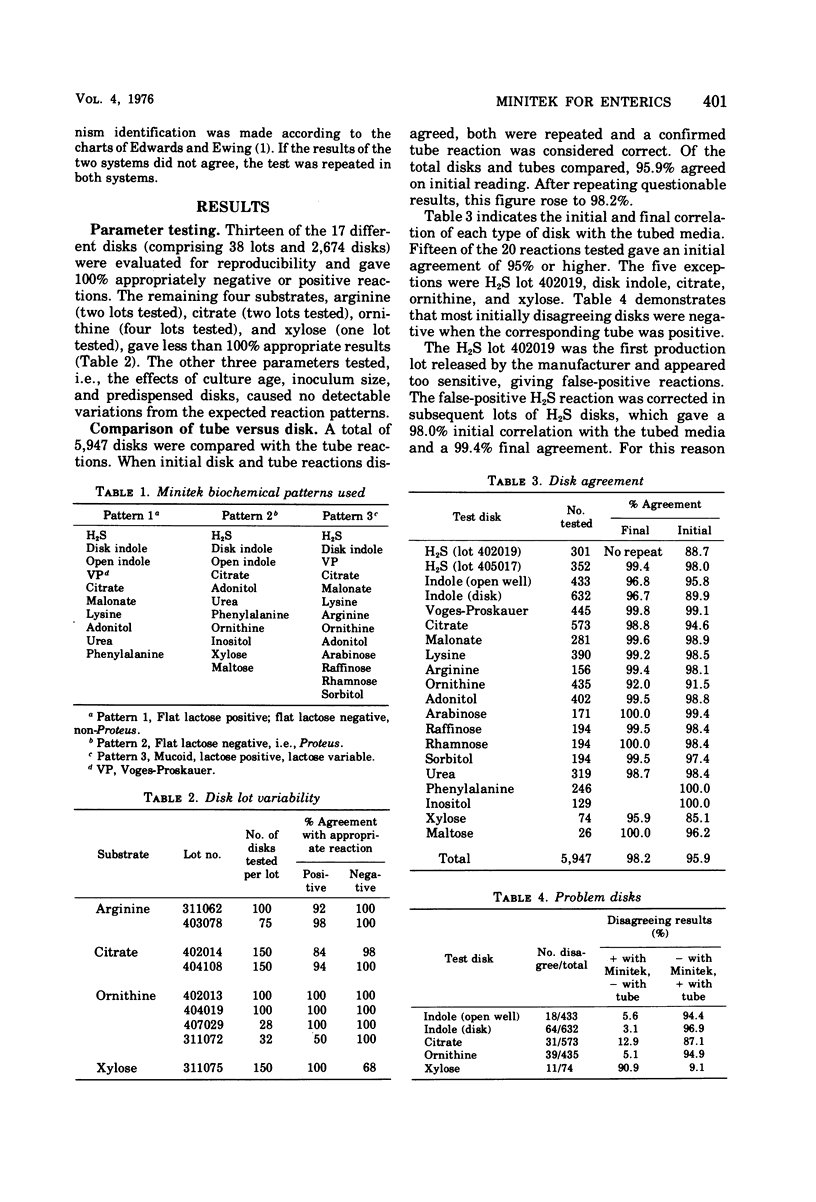
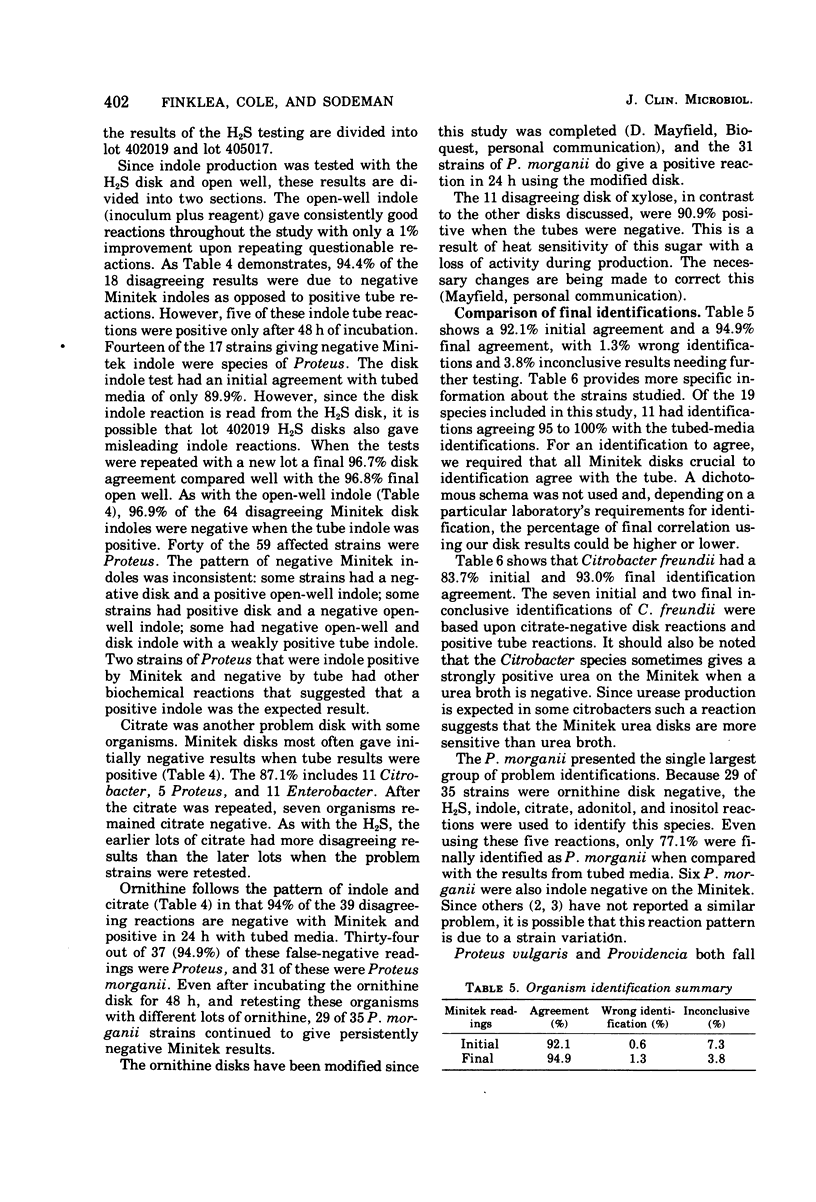
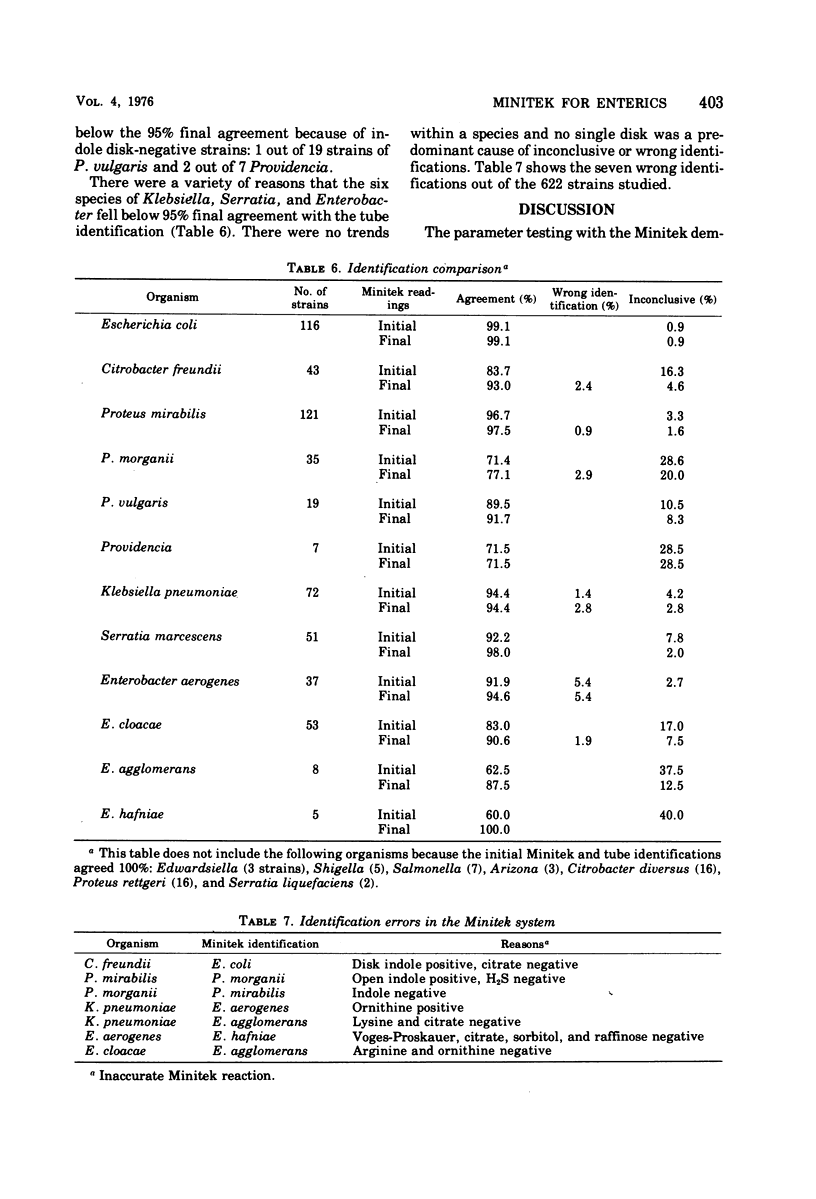
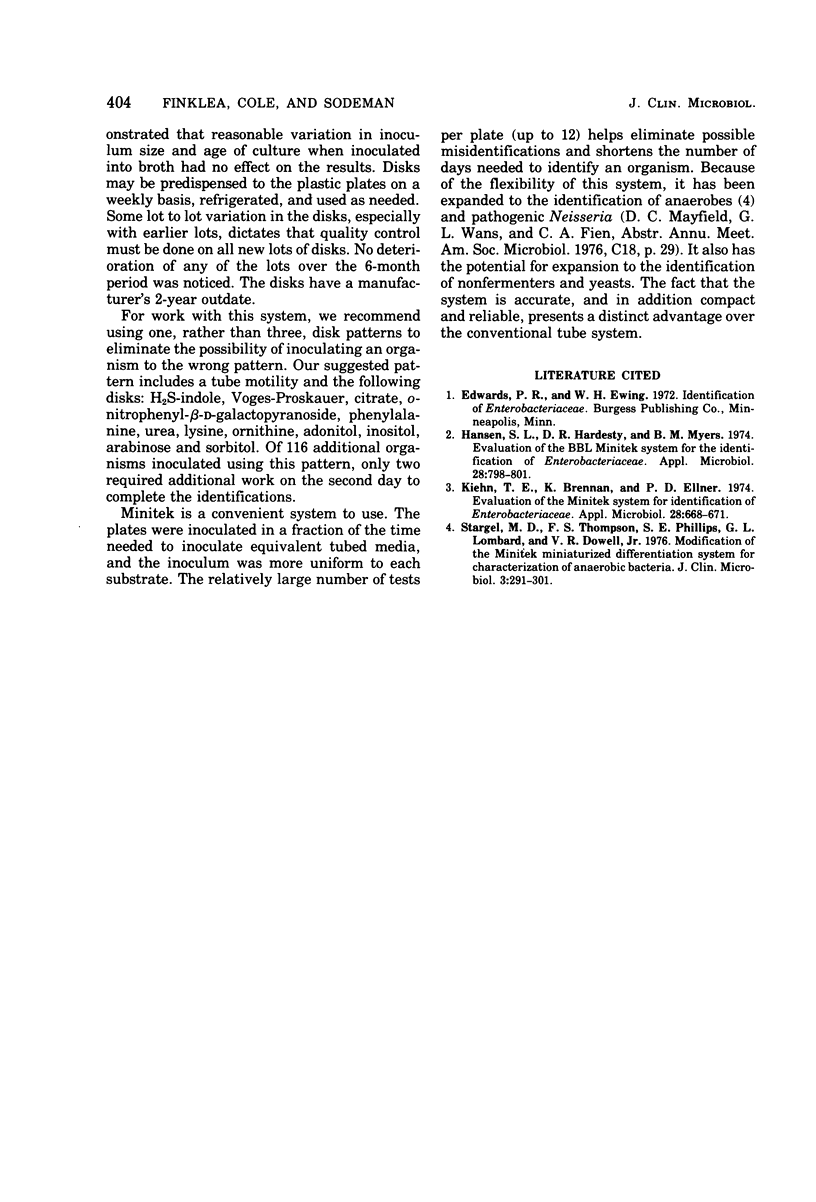
Selected References
These references are in PubMed. This may not be the complete list of references from this article.
- Hansen S. L., Hardesty D. R., Myers B. M. Evaluation of the BBL Minitek system for the identification of Enterobacteriaceae. Appl Microbiol. 1974 Nov;28(5):798–801. doi: 10.1128/am.28.5.798-801.1974. [DOI] [PMC free article] [PubMed] [Google Scholar]
- Kiehn T. E., Brennan K., Ellner P. D. Evaluation of the Minitek system for identification of Enterobacteriaceae. Appl Microbiol. 1974 Oct;28(4):668–671. doi: 10.1128/am.28.4.668-671.1974. [DOI] [PMC free article] [PubMed] [Google Scholar]
- Stargel D., Thompson F. S., Phillips S. E., Lombard G. L., Dowell V. R., Jr Modification of the Minitek Miniaturized Differentiation System for characterization of anaerobic bacteria. J Clin Microbiol. 1976 Mar;3(3):291–301. doi: 10.1128/jcm.3.3.291-301.1976. [DOI] [PMC free article] [PubMed] [Google Scholar]


